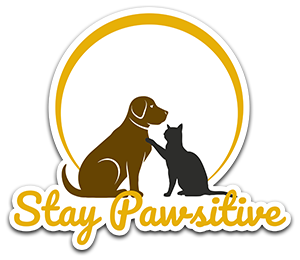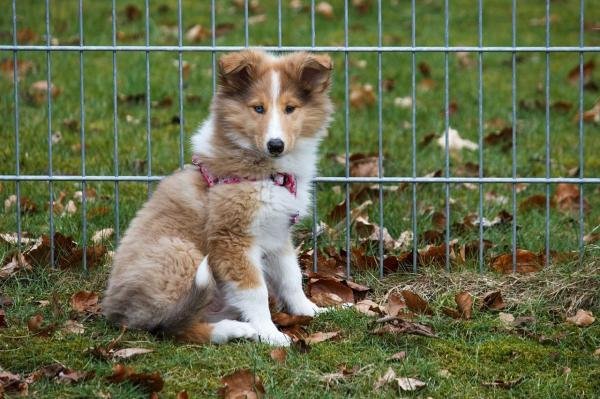Training a dog means more than just teaching it a few tricks that make us laugh, education stimulates the dog’s brain and facilitates coexistence and their behavior in public.
It is important to have patience and to start working on this project as soon as possible as it will strengthen your bond and improve the quality of life of both of you. However, doubts may arise regarding ‘where to start’. This is normal as dog training is a broad subject, especially for those who have just decided to take in a dog for the first time. If this is your case, we recommend you start by taking your new friend to the vet, have it treated for worms and have it vaccinated following the vet’s instructions. Meanwhile, you can start toilet training and the basic dog commands training. Don’t you know them? Read on and discover them!
Sit!
The first thing to teach a dog is to sit. It is the easiest command to teach and for the dog it is something natural, so it will not be too much work for the dog to learn this. If you can make it sit and understand that this is the position to ask for food, go outside or simply let you know that it wants you to do something something it will be better than having the dog communicating by jumping about. To achieve this, follow these steps:
- Take a treat or reward for your dog. Let the dog smell it and then wrap it in a closed fist.
- Stand in front of your dog while it pays attention to you expecting to receive the treat.
- Say to the dog: “[Name], sit!” or “[Name], sit down!” Use whichever you prefer.
- With the dog’s attention fixed on the fist, begin to follow an imaginary line toward the back of the dog, going over its head.
At first the dog will not understand, perhaps it will try to turn or move around but keep trying until it sits. Once the dog does this give it the treat whilst you say “good boy!”, “very good!” or any other positive phrase.
You can use any word you want to teach the order, just keep in mind that dogs tend to remember simple words more easily. Once you select the order you should always use the same one.. If one day you say “sit” and the next “sit down” and on the third something else your dog will not internalize the command and will therefore ignore you.

Stay!
Your dog must learn to stand and stay still. This is the best approach for when visitors come over, you go out for a walk or simply want to keep the dog away from something or someone. How can we make the dog stay still? By following these steps:
- When your dog is sitting, stand next to it keeping the animal to the left or to the right, choose one of the two directions. Put the leash on and say “[Name], stay!” while you put the palm of your hand open near the dog. Wait a few seconds and if it does this say again “well done!”, or something similar and reward it with a treat and some affection.
- Repeat the above process until it stays still more than 10 seconds. Remember to always reward him at first, then you can alternate between a reward and a simple “good boy!”.
- When you can get your dog to remain still give the order and move away. If it follows you come close to give it the order again. Move a few meters away and then call it and give it a reward.
- Start increasing the distance until your dog is still even at 10 – 15 meters (30 to 50 feet), or even if someone else calls it. Always remember to call it at the end and say “come here!” or something similar so that it knows when it can to move.

Down!
Together with sitting, getting the dog to lie down is another basic command that is easy to learn. Moreover, it is a logical process, as you can first say “still”, then “sit” and then “down”. The dog will quickly associate this and in the future it will be almost automatic.
- Stand in front of your dog and say “sit”. As soon as it sits say “down”, “lie down” or “floor” and point to the ground. If it does not react, then hide a treat in your hand and lower it to the ground (without letting go), the dog will automatically follow the treat and lie down.
- When it lies down give it the treat and say “good boy!” and pat or stroke it to reinforce that action.
If you use the trick of putting a treat in your hand you must gradually withdraw this element so the dog learns to lie down even without the treat.

Here!
We do not want our dog to escape, not listen to us or not come when called. So calling the dog is the fourth basic order in dog training, because if it does not come to us we can hardly make it sit, lie or be still.
- Put a treat under your feet and, without the dog knowing that the treat is there, shout to it “here!” “here boy” or “come” . At first it will not understand but when you signal to the treat it will come quickly. On arrival say “good boy!” and pet it.
- Go somewhere else and repeat the same action, this time without a treat. If it does not come use the treat again until your dog associates the “here!” with the order.
- Increase the distance until you get the dog to react to your call from many meters away. If it associates a waiting reward to the call it will not hesitate to run to you as soon as you call it.
Remember to reward the dog when it completes the basic orders, positive reinforcement is the best way to educate a dog or any other animal.

Together!
Pulling on the lead is a common problem when going for a walk. We can make the dog come, sit and lie down, but as soon as we get moving again the only thing it does is start pulling again to smell or try to catch something. This is the trickiest part in this guide to basic dogs training, but with patience we can get the dog to walk with us.
- Start walking with your dog down the street and as it starts pulling say “sit!”. Tell it to sit in the same position (right or left) that you use when you say “still!”.
- Repeat the command “Still!” and do as if you are about to start walking. If it does not stand still repeat the command until it obeys. When it gets it say “go!” to start walking again.
- When it moves away again say “together” and point to the side that you have chosen for it to remain still. If the dog does not listen or moves farther away say “no!” and repeat the previous command until it comes and sits, which is what it will do automatically.
- Never punish it or shout loudly if it does not come. The dog should relate the stopping and not pulling to something good, so you should reward it every time it comes and stays still.

Other more advanced commands for dogs
Although the above mentioned are the basic commands that every owner must know to start properly educating their dog, there are other more advanced level commands we can start practicing once the first set have been internalized.
- “Fetch“. This command is used in canine obedience to receive something. For example, if we want to teach our dog to bring the ball or a toy it is essential to teach it both the command “fetch” as well as “bring” and “let go”.
- “Jump“. Especially for those dogs that have agility practice, the order “jump” will help them get over the fence, wall, etc., upon the owner’s command.
- “Forward“. This command can be used with two different purposes, to indicate that the dog should run forward or as a release order so the dog knows it cans top doing whatever activity it is involved in. As the most common is the first one, we can also replace the command word with another word such as “go”.
- “Find“. As we discussed, with this order your dog will learn to track an object that you have thrown or hidden somewhere in the home. With the first option we will keep the dog active, entertained and above all free from tension, stress and pent-up energy. With the second we will stimulate its mind and smell.
- “Let go“. With this order our dog will return the object it found and brought back. Although it may seem that “find” and “fetch” is enough, teaching the dog to release the ball will, for example, help us avoid having to remove the toy ourselves and will therefore allow us to have a calmer companion.
Positive reinforcement
As specified in each of the basic commands for dogs, positive reinforcement is always the key to getting the dog to internalize the commands and enjoy itself while playing with us. You must never punish the dog in a way that causes physical or psychological harm. In this way, you will draw on a convincing “no” when you want to show that the dog must correct its behavior and an effusive “very good” whenever it deserves this. Also, we must remember that it is not good to abuse of the training sessions as this will only develop stress in your dog.
You must have patience to teach your dog basic commands as this can not be done in just 2 days. This basic training will make them more comfortable when you go out for walks and avoid having visitors “suffering” the excess affections of your dog. If you have any questions or want to add to the mentioned points some special techniques that you know about, then we will see you in the comments section.
If you want to learn more about how to train your dog – basic commands here’s one video that can help you :
Source:animalwised.com



